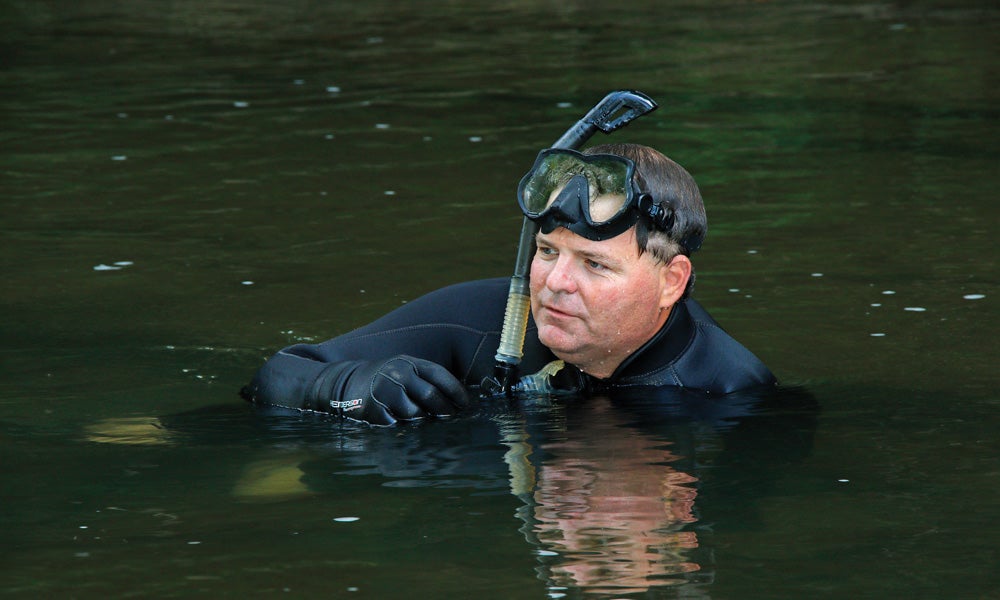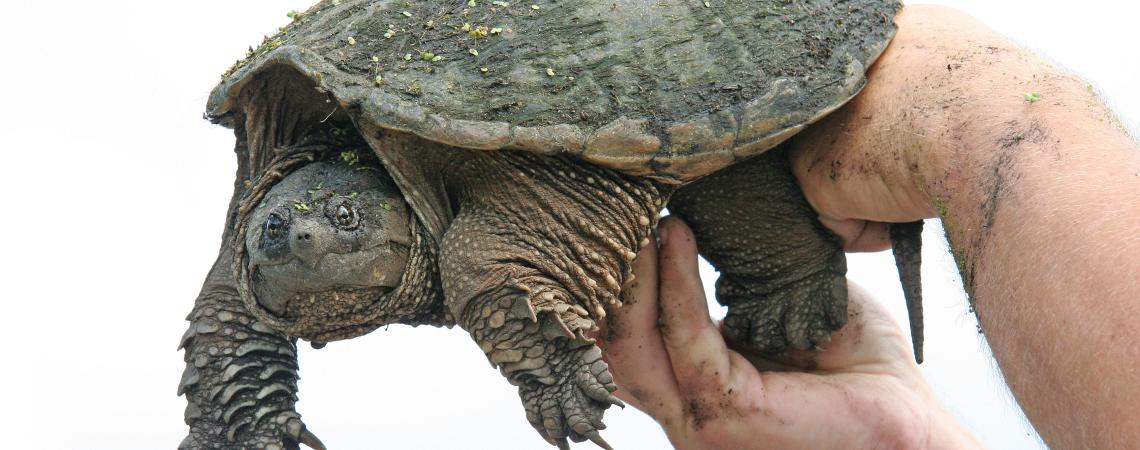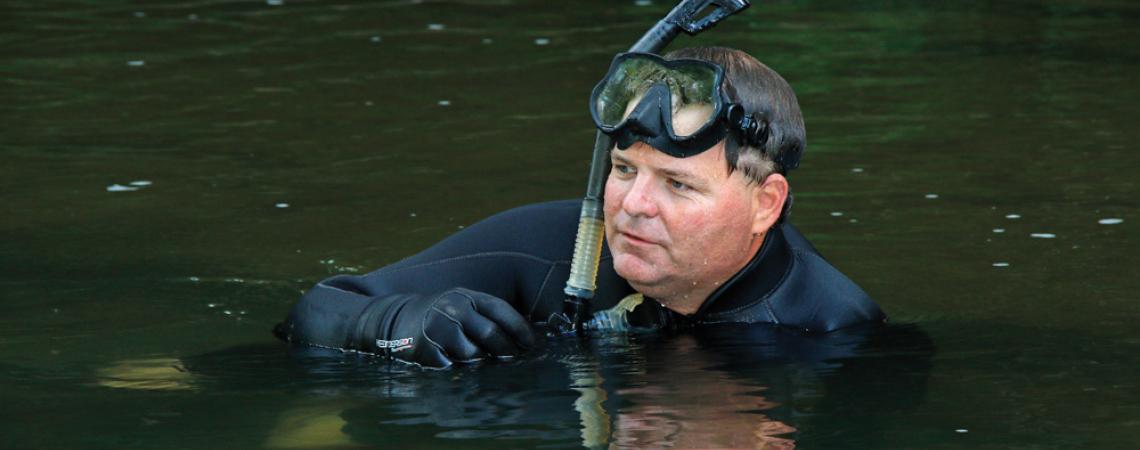There are countless unique ways to earn a living in 21st-century America, but not many more unusual than that of a professional herpetologist. The study of amphibians and reptiles, herpetology deals with wild critters that lots of people find repulsive. Even Carl Linnaeus (1707–1778), the father of modern taxonomy, described them as “so foul and loathsome that our Creator saw fit not to make too many of them.”
A few folks, however, seem inexplicably drawn to snakes, lizards, turtles, frogs, and their ilk. Greg Lipps, a member of Tricounty Rural Electric Cooperative in northwest Ohio, is one of them.
As a professional herpetologist, Greg Lipps is particularly interested in reptiles and amphibians.
“I grew up in Cincinnati, where my father owned a pet store and delivered supplies to other pet stores,” Lipps says. “I rode along with him whenever I could and was always fascinated by the animals in the various shops we visited — particularly the reptiles and amphibians.”
Lipps was so taken with wildlife that he actually attended high school at the Cincinnati Zoo. “At that time, the zoo had a work-study program where I and a dozen other juniors and seniors took formal classroom studies in the morning, then worked in the various departments of the zoo in the afternoon,” he says. “I absolutely loved it, and learned a ton. In fact, when I graduated, a zoo elephant handed me my high-school diploma.”
Lipps went on to attend the University of Cincinnati and Bowling Green State University, earning undergraduate and graduate degrees in biology. He is now the amphibian and reptile conservation coordinator at Ohio State University — in essence, the “head herp” for the entire Buckeye State.
“One of the things I’ve enjoyed most about my career is the hands-on aspect of it,” Lipps says. “I really like getting into the fields and forests, swamps and marshes, studying wildlife, then actually seeing the work I do with these animals make a long-term difference — especially concerning endangered species.”
Lipps’ favorite species is the Eastern hellbender, a totally aquatic salamander. “They’re so large (as much as 2 feet or more in length) and are such a prehistoric-looking animal, and they have such an interesting life history, that even after seeing and handling hundreds of them in the wild, I still get a thrill every time I snorkel up on one in a river or stream.”
As might be imagined, Lipps has lots of interesting stories to tell about his years afield. One has to do with driving rural roads on warm, rainy nights gathering live frogs to study their population densities and distribution.
“Since I’m often working odd hours in odd places, it’s pretty common for me to get stopped by law enforcement officers,” Lipps says. “Most of those encounters simply involve the officer checking my driver’s license and a short discussion about what I’m doing. But one of them told me he didn’t care what I was doing and that I was to leave his jurisdiction immediately and never come back — which I did.”
Lipps eventually purchased a vanity license plate for his work truck (AMPHIB, short for amphibian) in hopes of shortening his time spent explaining his activities to police. He said it seems to have helped, at least somewhat. However, his brother, who is an auto mechanic, once took Lipps’ truck into his shop to do some maintenance work, and the other mechanics looked at the license plate and wanted to know what made the truck amphibious.
Today, Greg Lipps spends much of his time mentoring the next generation of herpetologists entering the profession. “Most of these people are young, enthusiastic, incredibly bright recent college graduates. For instance, one of my first seasonal field employees (Maddie Sophia) has become a regular reporter for National Public Radio’s science programming, and to now hear her voice on the radio is incredibly satisfying and fulfilling for me.”











